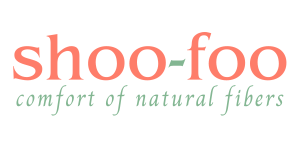Bamboo cellulose, a soft and strong fiber
At SHOO-FOO, our bamboo fabric begins with a time-honored tradition: local villagers harvest bamboo using sustainable methods that help preserve the forest ecosystem. Bamboo, which grows like grass, regenerates naturally—so cutting it properly actually supports forest health.
Once harvested, the bamboo stems and leaves are softened using steam, then broken down into a pulp called cellulose—the base material for creating soft, breathable bamboo fabric.

To transform this pulp into usable fiber, we use N-Methylmorpholine N-oxide (NMMO)—a non-toxic, organic solvent that’s been trusted since the 1990s for converting plant cellulose into textiles. This process is known as the lyocell process, a closed-loop technique that recycles the solvent at a rate of 99.5%, preventing environmental leakage and minimizing waste. Unlike conventional chemical methods, NMMO preserves the natural integrity of bamboo while protecting waterways and ecosystems.
This method is widely recognized as one of the most eco-friendly ways to produce bamboo yarn and fabric, saving both water and energy. And because bamboo yarns are naturally clean, they require far fewer chemical treatments than cotton—no heavy scouring, bleaching, or shaping needed. The result? Luxuriously soft, sustainable textiles that are gentle on your skin and the planet.
Once the bamboo yarns are made and ready for spinning into threads, bamboo does not require much in the way of scouring, bleaching, shaping or cleaning. In fact, most chemicals and steps used in the cotton process would damage the bamboo yarn anyway.
There is a way to make bamboo using machines and no chemicals, but that process is so costly and so labour intensive, there is hardly anyone using that technology today. But the good news is that technology progresses, and the bamboo manufacturing process is constantly improving.
Cotton and Microfiber production
Before being used in the fabrication of a product cotton, both ‘regular’ and organic, requires several more steps before the thread is ready to be knitted or woven. They first need to be cleaned, sized, softened, bleached, strengthen, smoothed. From cleaning agents to get rid of sticks, ginning machines to remove seeds, oxidizers to bleach away yellow-ness and gas flames to smooth out surface fibers, the process is hefty and much more harsh on the planet in terms of byproduct when compared to bamboo.
What is Lyocell?
The production of lyocell is similar to the process of making bamboo, only it uses wood pulp from hardwood (oak, birch, eucalyptus, among others) as its source instead of bamboo.
Many people refer to the closed-loop process describe above as the “lyocell process“; referring to the technique which produce cellulose fibres from dissolved pulp using a close-loop dry jet-wet spinning process. Lyocell is traditionally made from hardwood logs or chips (often birch or oak) and more recently from eucalyptus, while bamboo is made, well, from bamboo!
Is bamboo manufacturing really a “green” process?

Truth be told, the production of bamboo is one of the most eco-sustainable when compared to the steps involved in the growth, use of resources and manufacturing of other fabrics.
During growth, bamboo has zero impact on the planet. It is a plant that grows naturally with just rain and sun – no land reclaiming, no irrigation and no replanting necessary (bamboo can grow to full maturity within 3 to 4 years, all on it’s own). The plant itself is a natural deterrent to pests, so it requires no pesticides or insecticides. The forests are managed by local communities and harvesting is done without chemicals and without large machinery – it is all mechanical, as it has been done for centuries.
Organic and Eco sustainable

We are proud to say that the bamboo fibres we used for our products have obtained the FSC Chain of Custody Certification – meaning that from the bamboo forest to the fibres, all successive stages of production meet the criteria and rules requested to assure a responsible stewardship of the world’s forests.
We are also proud of using only bamboo crops that are certified organic by the Organic Crop Improvement Association (OCIA), the United States Department of Agriculture (USDA) and Ecocert seals; and healthy by Oeko-Tex Confidence in Textiles.
Why make bamboo textiles in China?
First, the know-how of producing bamboo fabrics has been developed in China and we believe that the best quality in this category of products still comes from China.
Second, the natural resources used to make our products is located in China (up to now, no other countries in the World produce yarns made from cellulose of bamboo). In order to keep our supply chain short and eco-efficient, we’ve decided to handle all the transformation process in China.

